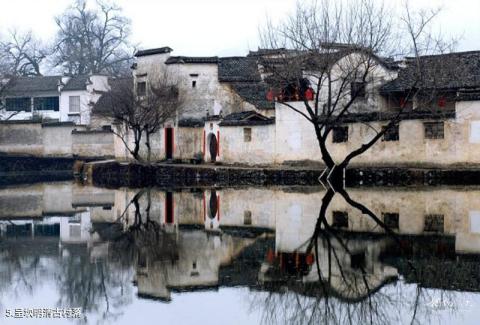
Introduction to the Ming and Qing Ancient Villages in Chengkan: This is the oldest and most complete Bagua Feng Shui ancient village of the Eastern Han Dynasty found in the world so far. The ancient name of Chengkan was "Longxi". It was praised by the famous Neo-Confucian Zhu Xi as "Chengkan Shuangxianli, the first village in the south of the Yangtze River". It was built in the Eastern Han Dynasty and the Three Kingdoms period. It has a history of more than 1,800 years. The village is based on the "Yin" of the "Book of Changes". The site layout is based on the Bagua Feng Shui theory of "the unity of the two qi (kan), yang (cheng), and the unity of nature and man". There are pavilions, platforms, buildings, pavilions, bridges, wells, ancestral halls, societies and houses of different styles. The whole village is now There are more than 100 Ming and Qing Dynasty buildings preserved, including 3 national and provincial cultural relics protection units such as Luodong Shu Temple, Changchun Society, and Luo Runkun House. The exquisite craftsmanship and exquisite stone carvings, brick carvings, wood carvings, and painted paintings have combined Huizhou’s ancient architecture The antiquity, grandeur, beauty and elegance of art are vividly reflected, and it is praised as the "Chinese Ancient Architecture Art Museum" by Chinese and foreign experts and tourists.
